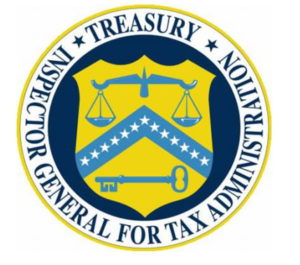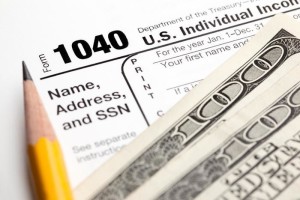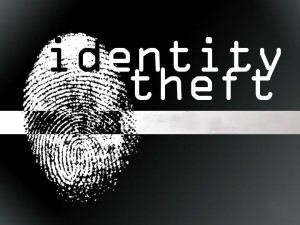The Treasury Inspector General for Tax Administration Management and Performance Challenges Facing the Internal Revenue Service for Fiscal Year 2020
Monday, October 28th, 2019 @ 2:25PM
The Treasury Inspector General for
Tax Administration
Management and Performance Challenges Facing the Internal Revenue Service for Fiscal Year 2020
CFEG reports that on October 18, 2019 the Treasury Inspector General For Tax Administration (TIGTA) released a report on management and performance challenges facing the IRS for fiscal year (FY) 2020.
https://www.treasury.gov/tigta/management/management_fy2020.pdf
In its report TIGTA identified and discussed ten of the IRS’s top management and performance issues for FY 2020 with the highest vulnerability to the Nation’s tax system. The ten areas are:
- Security Over Taxpayer Data and Protection of IRS Resources; 2. Implementing Tax Law Changes; 3. Addressing Emerging Threats to Tax Administration; 4. Supporting an Enhanced Taxpayer Experience; 5. Modernizing IRS Operations; 6. Improving Tax Reporting and Payment Compliance; 7. Reducing Fraudulent Claims and Improper Payments; 8. Impact of Global Economies; 9. Protecting Taxpayer Rights; and 10. Achieving Operational Efficiencies.
In this article CFEG will discuss TIGTA’s findings pertaining to 3. Addressing Emerging Threats to Tax Administration; 6. Improving Tax Reporting and Payment Compliance; 7. Reducing Fraudulent Claims and Improper Payments; and 9. Protecting Taxpayer Rights.
Addressing Emerging Threats to Tax Administration
Identity theft tax fraud will continue to be a challenge for the IRS in FY 2020.
Identity theft tax fraud occurs when an individual uses another person’s or business’ name and Taxpayer Identification Number (TIN) to file a fraudulent tax return for the purpose of obtaining a tax refund. Because ID theft tax fraud continues to evolve the IRS must continually adapt its detection and prevention processes to reject fraudulent tax returns that are electronically filed. https://www.treasury.gov/tigta/management/management_fy2020.pdf
TIGTA reported that for the 2019 Filing Season, the IRS is using 193 identity theft filters to identify potentially fraudulent individual tax returns and prevent the issuance of fraudulent tax refunds. TIGTA further reported that as of April 30, 2018, the IRS reported that it had identified 2.8 million tax returns with refunds totaling $16.6 billion for additional review because of identity theft filters.
TIGTA reported that in addition to identity theft, telephone calls from criminals impersonating IRS agents are also one of the IRS’s “Dirty Dozen” tax scams and remain an ongoing threat to taxpayers as con artists threaten taxpayers with arrest, deportation, and license revocation if the victim does not pay a fraudulent tax bill. TIGTA reported that since the fall of 2013, a significant amount of its Office of Investigations workload has consisted of investigating these scams in which more than 2.5 million intended victims have received unsolicited telephone calls from individuals falsely claiming to be IRS or Department of the Treasury employees. According to TIGTA to date, more than 15,700 victims reported that they have paid approximately $79 million to these criminals. The number of complaints TIGTA has received about this scam has cemented its status as the largest, most pervasive impersonation scam in the history of the IRS.
https://www.treasury.gov/tigta/management/management_fy2020.pdf
Improving Tax Reporting and Payment Compliance
The IRS is responsible is to ensure that taxpayers comply with the tax law and that taxpayers understand their filing requirements so that the rate of voluntary compliance does not decline. Collecting taxes is an area where the IRS will continue to be challenged. TIGTA in its report stated that the 2015 Fixing America’s Surface Transportation Act, required it to implement the Private Debt Collection (PDC) program and begin using private collection agencies (PCA) to collect inactive tax receivables that the IRS was previously unable collect. https://www.treasury.gov/tigta/management/management_fy2020.pdf
TIGTA reported that the Joint Committee on Taxation estimated that the current PDC program would yield about $2.4 billion in additional revenue through FY 2025. As of September 2018, the IRS had assigned more than 700,000 taxpayer accounts to private collectors. The PCAs collected about $88.8 million (or 2 percent) from the balance owed on these accounts. They also established more than 21,000 payment arrangements, but taxpayers later failed to make payments on more than half of them. TIGTA found that the PCAs underperformed in areas such as accuracy and professionalism. TIGTA also reported that PCA payment calculators do not calculate interest and penalties accurately.
Another area of concern that TIGTA focused on is the collection of tax owed by self-employed individuals. https://www.treasury.gov/tigta/management/management_fy2020.pdf
TIGTA reported that studies based on IRS National Research Program data have found that sole proprietors underreported their net income by 64 percent (based on the average for Tax Years (TY) 2008 through 2010), which is up from 57 percent in the TY 2001 estimate. TIGTA found that with the growth of online platform companies in recent years, which allow people easy and convenient ways to obtain needed services and others to work as self-employed individuals providing those services (also known as the “gig economy”), it is likely that self-employment tax underreporting will continue to be a growing problem if not addressed. The gig economy is comprised of online platform companies such as Uber, Lyft, Etsy, Handy, and TaskRabbit. In its report TIGTA stated that it recently reported there were billions of dollars in potential tax discrepancies involving taxpayers who earn income in the gig economy that are not worked by the IRS. TIGTA found that many cases were not selected to be worked by IRS programming due to the large volume of discrepancies that were identified. In addition, TIGTA reported that IRS employees removed thousands of cases from inventory without justification or with justification that was inaccurate. Further, Treasury Regulations do not require certain gig economy businesses to issue Form 1099-K, Payment Card and Third-Party Network Transactions, unless workers earn at least $20,000 and engage in at least 200 transactions annually. TIGTA concluded that many taxpayers who earn income in the gig economy do not receive a Form 1099-K and therefore, their income is not reported to the IRS. When income is not reported to the IRS, taxpayers are more likely to be noncompliant.
In addition, TIGTA reported that billions of dollars in non-payroll tax withholding discrepancies are not being addressed. A business entity (payer), such as a bank or financial institution, is often required to withhold backup withholding or Federal income tax when making payments involving non-payroll compensation to recipients. The payer of these reportable transactions is required to provide income and withholding documents to the IRS and recipients. Payers report total backup and Federal income tax withheld during the tax year on Form 945, Annual Return of Withheld Federal Income Tax. However, TIGTA reported that its analysis identified instances in which payers did not report backup and Federal income tax withholding amounts on Form 945 or reported a lesser amount on Form 945 than reported on the Forms 1099 or Forms W-2G, Certain Gambling Winnings, issued to recipients. For example, in its report TIGTA identified 7,265 payers that provided to the IRS TY 2016 Forms 1099 or W-2G reporting almost $923 million in withholding but did not file the required TY 2016 Form 945. TIGTA also identified 3,163 payers that reported on Form 945 approximately $760 million less in withholdings than what they reported on associated Forms 1099 and W-2G.
https://www.treasury.gov/tigta/management/management_fy2020.pdf
TIGTA further reported that the IRS also needs to improve its processes to address the discrepancies between alimony deductions claimed and income reported. An alimony income reporting discrepancy occurs when individuals claim deductions for alimony that they did not pay or individuals do not report alimony income they received. TIGTA reported in August 2019 that the IRS still has not developed processes and procedures to address the substantial compliance gap that results from alimony income reporting discrepancies. TIGTA analyzed TY 2016 tax returns with an alimony deduction processed as of February 8, 2018, and found that the amount associated with alimony income reporting discrepancies increased 38 percent from $2.3 billion in TY 2010 when TIGTA first reported this concern to more than $3.2 billion in TY 2016. Based on TIGTA’s analysis, alimony reporting discrepancies could result in more than $1.1 billion in unreported tax over the next five years. https://www.treasury.gov/tigta/management/management_fy2020.pdf
Reducing Fraudulent Claims and Improper Payments TIGTA reported that an improper payment as any payment that should not have been made, was made in an incorrect amount, or was made to an ineligible recipient. Improper payment legislation requires Federal the IRS and other federal agencies to estimate the amount of their improper payments and report to Congress annually on the causes of and the steps taken to reduce such improper payments.
https://www.treasury.gov/tigta/management/management_fy2020.pdf
The Earned Income Tax Credit (EITC) has been identified as a high-risk program, and as such, the IRS must include the rate and amount of improper payments in the Department of the Treasury’s annual Agency Financial Report. The IRS estimates that approximately 25 percent ($18.4 billion) of EITC payments were issued improperly in FY 2018. TIGTA found that while refundable credits such as the EITC, the Additional Child Tax Credit (ACTC), and the American Opportunity Tax Credit (AOTC) provide benefits to individuals, the unintended consequence of these credits is that they can be the targets of unscrupulous individuals who file erroneous claims. Refundable credits can result in tax refunds when no income tax is paid or withheld because these credits are allowed even if they exceed the amount of the individual’s tax liability. As a result, they pose a significant risk as an avenue for those seeking to defraud the Government. Congress passed the Protecting Americans from Tax Hikes Act of 2015 (the PATH Act) with a number of integrity provisions intended to reduce improper refundable credit claims. These provisions are projected to save approximately $7 billion over 10 years by reducing fraud, abuse, and improper payments in refundable tax credit programs. TIGTA believes that the IRS is significantly understating its estimate of improper payments associated with refundable tax credits in its reports to the Office of Management and Budget and Congress. TIGTA reported that the IRS continues to incorrectly rate the improper payment risk associated with the ACTC, the AOTC, and the Premium Tax Credit (PTC). As a result, the incorrect rating allows the IRS to continue to avoid the reporting of required information for these programs to the Department of the Treasury for inclusion in the Agency Financial Report. The IRS estimates that nearly 33 percent ($8.7 billion) of ACTC payments made during TYs 2009 through 2011 were likely improper and that over 31 percent ($5.3 billion) of AOTC payments made during TY 2012 were likely improper.
https://www.treasury.gov/tigta/management/management_fy2020.pdf
In addition, the IRS’s own analysis of its compliance data indicates that the estimated error rate for Net PTC payments was 41 percent ($440 million). This analysis confirmed that Net PTC improper payments, as defined by the Office of Management and Budget, would likely exceed the improper payment reporting thresholds used for classification as a high risk.
https://www.treasury.gov/tigta/management/management_fy2020.pdf
Protecting Taxpayer Rights
TIGTA reported that the IRS must balance tax compliance activities against the rights of taxpayers to receive fair and equitable treatment. The IRS continues to dedicate significant resources and attention to complying with the taxpayer rights provisions of the IRS Restructuring and Reform Act of 1998. https://www.treasury.gov/tigta/management/management_fy2020.pdf
The IRS provides taxpayers with the Taxpayer Bill of Rights in many notices and in-person interviews to inform taxpayers about their rights with respect to examinations, appeals, collections, and refunds. Over the years, TIGTA has audited certain taxpayer rights provisions and reported that, in general, the IRS has improved its compliance with these statutory provisions and is documenting its protection of taxpayer rights. However, during the review of the IRS’s process to notify taxpayers of their rights when requesting an extension of the statute of limitations for assessing additional taxes and penalties, TIGTA found that some taxpayer audit files lacked documentation to support that employees followed the IRS’s internal procedures for further explaining the taxpayers’ rights to the taxpayers.
https://www.treasury.gov/tigta/management/management_fy2020.pdf
In addition, TIGTA’s review found instances in which the audit files lacked documentation to support that the IRS complied with procedures requiring the notification of a taxpayer’s representative when an authorization for third-party representation existed. During the review of the IRS Office of Appeals Collection Due Process Program, TIGTA determined from a statistical sample that the IRS did not always classify taxpayer requests properly, and as a result, some taxpayers received the wrong type of hearing. The IRS also did not timely process the hearing requests for some taxpayers and made errors relating to the determination of the Collection Statute Expiration Date (CSED) on taxpayer accounts. The CSED is the expiration of the time period established by law to collect taxes. From a statistically valid sample, TIGTA identified instances in which the IRS incorrectly extended the CSED, allowing the IRS additional time it should not have had to collect the delinquent taxes.
https://www.treasury.gov/tigta/management/management_fy2020.pdf
TIGTA also evaluated the IRS’s compliance with legal seizure provisions. TIGTA reviewed a judgmental sample of 52 of the 260 seizures conducted from July 1, 2017, through June 30, 2018, to determine whether the IRS complied with legal and internal guidelines related to each seizure. TIGTA identified instances in which the IRS did not comply with a particular Internal Revenue Code section or an internal procedure or there was no guidance present. https://www.treasury.gov/tigta/management/management_fy2020.pdf
Conclusion
In sum, according to TIGTA, in 2020, the IRS will continue to be challenged with threats to tax administration with the filing of fraudulent tax returns by criminals through ID theft tax refund fraud and criminals posing as IRS agents attempting to collect fraudulent tax bills. Collection of taxes will be a continued challenge for the IRS in 2020 in the use of private collectors as well as the collection of taxes owed by self-employed individuals. Billions of dollars in non-payroll tax withholding discrepancies are not being addressed and will be a collection challenge for the IRS in 2020. The IRS will also need to improve its processes to address the discrepancies between alimony deductions claimed and income reported. Improper payments, that is, any payment that should not have been made, was made in an incorrect amount, or was made to an ineligible recipient, will continue to be a challenge for the IRS in 2020, as the data shows that the IRS is losing billions of dollars to improper payments. Taxpayer rights will be a top priority for the IRS in 2020 as TIGTA has found that in many instances the IRS has not advised taxpayers of their rights.
Posted by cfegov
Categories: IRS Employees Falsify Tax Forms, IRS WASTEFUL SPENDING












